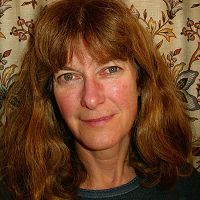Ishikawa et al., 2020 (In Press)
Combined use of radiocarbon and stable carbon isotopes for the source mixing model in a stream food web
Ishikawa, N.F., Finlay, J.C., Uno, H., Ogawa, N.O., Ohkouchi, N., Tayasu, T., Power, and Power, M.E. (2020)
Limnology and Oceanography 1-14
-
Eel, INVESTIGATOR
-
Eel, GRAD STUDENT
Abstract
Radiocarbon natural abundance (Δ14C) has emerged as a useful dietary tracer in freshwater ecology for the past decade, yet its applicability for separating aquatic and terrestrial resources has not been examined quantitatively. Here, we report Δ14C values of stream invertebrates in different functional feeding groups collected from the upper South Fork Eel River watershed, northern California. We found that algae‐grazing insect larvae show low Δ14C values (−43.1 ± 21.8‰, mean ± standard deviation, N = 6), reflecting the signal of dissolved inorganic carbon weathered from ancient inorganic carbon or respiration of old organic carbon. In contrast, the Δ14C values of leaf‐shredding insect larvae (21.7 ± 31.9‰, N = 5) were close to those of contemporary atmospheric CO2 except at the SF Eel River where algal production was highest. The Δ14C values of predators (−6.1 ± 35.7‰, N = 14) were intermediate between those of grazers and shredders. In a Bayesian mixing model, Δ14C provided a more ecologically realistic estimate for terrestrial vs. aquatic source contributions to invertebrates with lower uncertainty (i.e., narrower credible interval) than did the stable carbon isotopes (δ13C). These results demonstrate that Δ14C can be used, in combination with δ13C, to more precisely estimate organic matter sources to stream animals.
Citation
Ishikawa, N.F., Finlay, J.C., Uno, H., Ogawa, N.O., Ohkouchi, N., Tayasu, T., Power, and Power, M.E. (2020): Combined use of radiocarbon and stable carbon isotopes for the source mixing model in a stream food web. Limnology and Oceanography 1-14. DOI: 10.1002/lno.11541
 This Paper/Book acknowledges NSF CZO grant support.
This Paper/Book acknowledges NSF CZO grant support.
Explore Further


